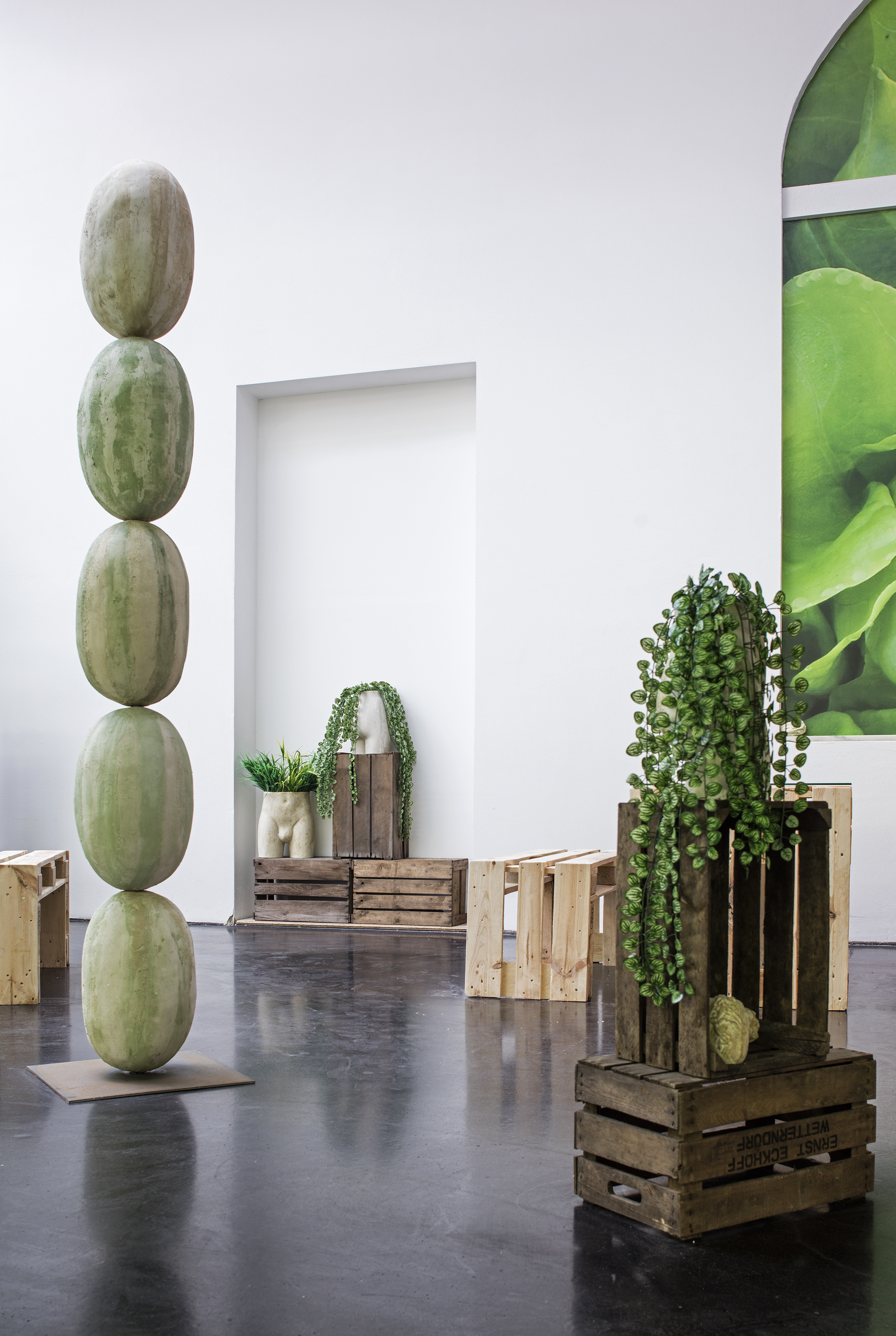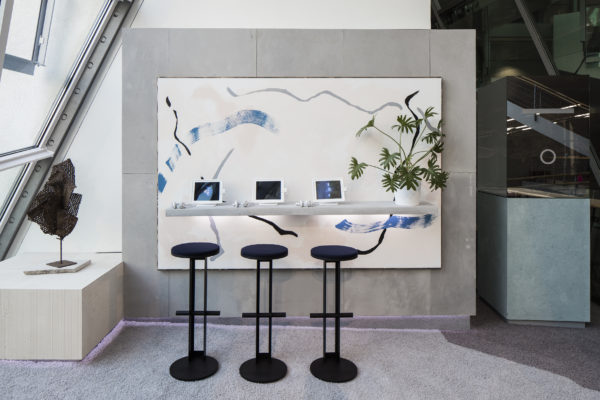Curated by the New York-based art and fashion magazine collective DIS, The Ninth Berlin Biennale: “The Present in Drag” (or BB9), attempts to examine a “postcontemporary” condition through the presentation of unavoidable inauthenticity. Mostly it consists of work made within privilege about privilege, filled with totems to a self-obsessed, hyper-stylized, youth-culture. But if one looks past this FOMO-narcissism, BB9 reveals itself as more of a design experiment than anything else: a test to see if one can use detached marketing tropes as an artistic intervention into the corporate model being critiqued. BB9 asks if art is distinguishable from advertising, branding, corporate pitches, and high-tech/end/value “experiences” and disposable products. The answer is yes and no, and BB9 provides an opportunity to see how such treatments succeed and fail.
The exhibition is best understood through its most pervasive work, “Untitled (Not in the Berlin Biennale)”, consisting of the promotional materials and exhibition signage created by the Biennale’s creative director Babak Radboy, author Chris Kraus, and photographer Roe Ethridge. These materials ape the look of corporate marketing ephemera using stock photos with models in incongruous situations accompanied by statements like, “WHY SHOULD FASCISTS HAVE ALL THE FUN?” DIS’ own videos advertising BB9 have a similar appearance, echoing iPhone ads asking viewers to “Imagine” things like “an issue of Artforum from the 15th century.” These promotional gestures are close enough to their referent to slip into our perception of the everyday, but strange enough to warrant a second look, a recognition of mis-recognition.
This is why the most salient works in BB9 follow a similar program and appear as ersatz showrooms, storefronts or products. Débora Delmar’s MINT, a lounge area where visitors can buy and consume the artist’s branded pressed juice, benefits from DIS’ likeminded design strategy, and in doing so, provides a satisfyingly icky opportunity to consider the role DIY aesthetics play in masking systems of exploitation and environmental destruction. Sure, the artist is complicit in these destructive systems; but if you buy the juice you are too.

Debora Delmar, MINT, 2016, ©Timo Ohler, courtesy of Debora Delmar Corp.; Duve, Berlin.
A work that perfectly fits into DIS’ overall curatorial plan is Christopher Kulendran Thomas’ New Eelam, a showroom presentation of posters, iPad stations, and a mock living room with a looping video on a flat screen TV. The video opens with a pseudo-academic analysis of Marxist theory—one half-expects pop-star philosopher Slavoj Zizek to appear as a talking head at any moment—and transitions to a story about the Tamil Tigers’ establishment of Tamil Eelam, a socialist secular state in northern Sri Lanka. Just as the video shifts from addressing how the Sri Lankan government massacred the Tamil people in 2009 to a strange analysis of the Amazon corporation’s self-perpetuating shareholder investment model and the power of dispersed globalized marketplaces, its tone changes, the music swells, and smiling, multicultural young people come into frame, unpacking luggage in bespoke apartments, measuring their walls for contemporary art, and collaborating on laptops in open-plan offices in major metropolitan cities. The video undermines any catharsis attached to good liberal concerns by revealing itself as a corporate pitch, selling a subscription-based citizenship service where you can travel, work and live anywhere in a shared-economy-inspired country-less country. This turn towards obvious coercion might seem like a cynical joke at first, but a closer look reveals something instructive.
Everything in the New Eelam brand—its elegant sans-serif typeface, shamanistic logo, pastel color scheme, even its paper stock—mimics the style guides and aspirational language of companies like Airbnb, Instagram, Uber, and the startups and artisanal services patrons of biennials like BB9 use every day. New Eelam unmasks these design treatments and makes their coercive elements conspicuous, and in doing so comes close to accomplishing Walter Benjamin’s implicit call to politicize aesthetics in a fight against fascism’s transformation of politics into art.
Unfortunately, otherwise valuable works in BB9, which fail to embody DIS’ predilection for corporate mimicry, seem out of place because they arrive pre-packaged as “art”. For example, Lucie Stahl’s large photographs of scanned body parts penetrated by cylinders extending deep into the museum walls on which they hang are intriguing for their engagement with architectural space, but they feel inconsequential alongside the hyper-designed ethos that pervades much of the biennale.
BB9 teaches us that yes, art can wear the frock of its enemy and in doing so can reveal how aesthetics support ideology. But would BB9 have been more illuminating if it went for a full-on trade show reality? No “art”, just promotions. Perhaps this approach would have allowed visitors a much-needed opportunity to see the designed world outside the museum anew and to wonder about the unexamined visual systems that support truly terrifying ideologies.



















0 Comments